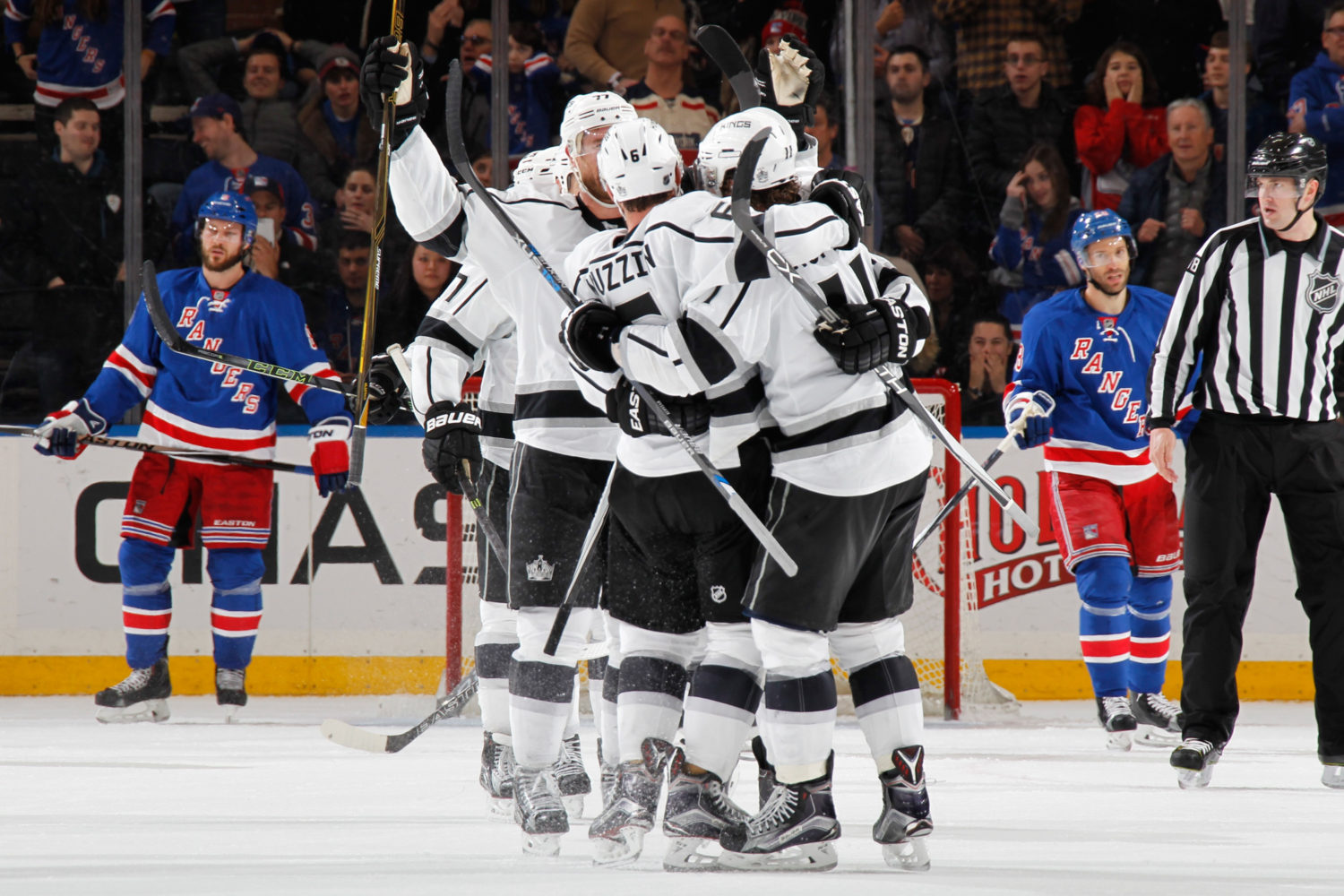The 2015-16 Los Angeles Kings, despite shortcomings in April, were a pretty good team when fighting from behind. With a record of 8-17-1, their record when trailing after two periods was far better than the current team’s record of 4-24-1.
That was, in part, because of the team’s ability to score goals with Jonathan Quick and Jhonas Enroth pulled. Even in Peter Budaj’s one game last season, the Kings scored with him pulled and ultimately won in overtime.
That season, Los Angeles pulled its goalie 29 times. They scored six goals in such situations. This season, the team has already pulled its goalie 27 times. Of the two goals scored in those situations, neither was a game-tying goal. One was scored by Kyle Clifford in a 3-2 loss to the Rangers at Madison Square Garden on January 23, and the most recent was Alec Martinez’s shorthanded goal on Saturday that completed the scoring in a 4-3 home loss to the Canucks.
Recently, Darryl Sutter shared his approach towards pulling goaltenders.
“You prefer always to do it off a faceoff because there’s more continuity all the time,” he said. “Your success rate is like five-to-seven percent, which is not a situation you want to get into very often. Obviously we’re trying to set up to have the right guys or fresh guys on the ice, and that’s tough to do with no whistles. But you don’t score very often on it.”
“Quite honest, you’re going to score two or three times a year. That’s it.”
Sutter noted that his preference is to get the extra skater on the ice for a faceoff and referenced Mike Richards’ goal from the final moments of regulation during Game 5 the 2013 Western Conference Final.
“If you only have a matter of seconds, you’re trying to get one quality shot. You’ve got to win the faceoff, and usually you have set plays. We’ve scored goals on those. If you go back into your bookwork and remember in Chicago, a goalie out, Stanley Cup Playoffs … set plays, right? But you’ve got to win the faceoff to do it. Not many faceoffs are straight wins, right? There are a lot of scrapes and 50/50s and help, so if you’ve only got a few seconds, you’ve got to get a shot and a goal. But if you’ve got more than that, it’s a little different.”
But when there’s no faceoff, and a player leaves the bench to join the run of play, are there any general directions of where he should be positioned?
“It depends where the play is. If it’s going up the ice and he’s joining the play, if it’s in the zone, then he’s going to the front of the net, or you might have him where he’s spotted high where him and the defensemen are working together.”


Rules for Blog Commenting
Repeated violations of the blog rules will result in site bans, commensurate with the nature and number of offenses.
Please flag any comments that violate the site rules for moderation. For immediate problems regarding problematic posts, please email zdooley@lakings.com.